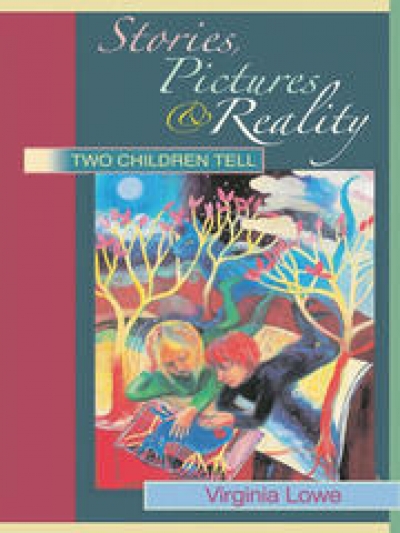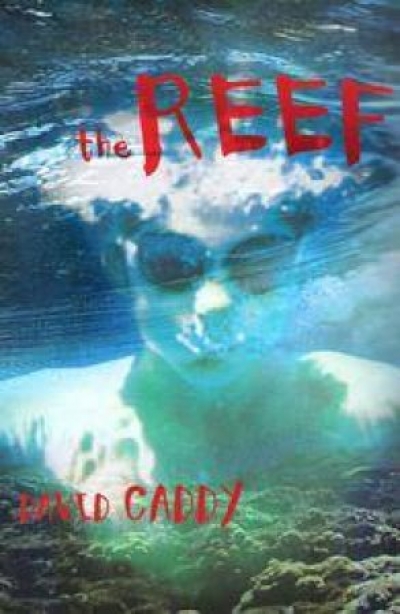Ruth Starke
Miss McAllister’s Ghost by Elizabeth Fensham & Take it Easy, Danny Allen by Phil Cummings
Lifelong love of books
Dear Editor,
Ruth Starke’s review of my book Stories, Picture and Reality: Two Children Tell (October 2007) is a competent, even enthusiastic, summary of the book’s main points, with emphasis on its uniqueness (starting with infants and books, and including siblings). She notes that no other male child has been studied in this way.
... (read more)Joel and Cat Set the Story Straight by Nick Earls and Rebecca Sparrow
Stories, Pictures and Reality: Two children tell by Virginia Lowe
Humour sells, and it is no coincidence that the best-selling authors in children’s fiction know how to tell a funny story. It can be pure escapism of the silliest sort or the kind of humour that helps us to cope with life’s disappointments, hardships and embarrassments. Most childhoods contain plenty of all three and thus provide rich material for writers, and none has pushed the boundaries further than Morris Gleitzman. Walking a fine line between what is funny and what is painful, he has successfully employed humour to explore such subjects as euthanasia, homosexuality, cancer and birth control, and the result has been books that have made thousands of readers laugh and cry, sometimes simultaneously. But the proliferation of recent titles featuring worms, toads and nostrils as protagonists has left me unmoved, and I feel lukewarm at best about those children overboard, underground or hiding from Nazis. Often the humour has seemed forced and contrived.
... (read more)Life’s not easy when … (fill in the blank according to your main story issue). It is a line that appears frequently on back covers and in press releases for junior fiction. But life is getting a lot easier for parents and teachers of reluctant readers who would far rather race around with a ball than curl up with a book. With the arrival of the sports novel, they can now read about somebody else racing around with a ball – or surfing, swimming, pounding the running track, wrestling, or cycling (the genre covers a wide field). Balls, however, seem to predominate. And problems. Life isn’t easy for publishers without a sports series. Hoping to emulate the success of the ‘Specky Magee’ books written by Felice Arena and Garry Lyon, publishers have been busy throwing authors and sport stars together, one to do the creative business, and the other to add verisimilitude and sporting cred.
... (read more)Stella Lees
Philip Reeves’s Infernal Devices (Scholastic) is the third part of a quartet about cities on wheels trundling about a future Earth. It has action, irony, intertextuality and flawed characters – some with dark agendas – and displays an original and startling imagination. Number four will complete the best fantasy since Philip Pullman’s His Dark Materials trilogy. On a smaller scale, and closer to home, Runner (Penguin), by Robert Newton, brings Depression-era Richmond alive. Young Charlie is employed by Squizzy Taylor, until the boy realises he’s doing the devil’s work. Newton’s wit lightens a tough tale with the inventive and laconic speech of Australian battlers, so that, when you’re not blinking back a tear, you’re laughing aloud.
... (read more)These titles are aimed at a primary school readership, yet there’s a wide gap in both ability and life experience between the emerging readers at one end and the almost-teenagers at the other. Some novels successfully bridge that gap, but I’m not sure The Reef (FACP, $14.95 pb, 128 pp) is one of them, despite the publisher’s classification that this is ‘for children aged 8–12 years’. It is certainly an exciting story of suspected murder and missing silver coins, but consider some elements of the plot: Tom, the young protagonist, is menaced and harassed by two nasty out-of-towners who threaten him with death and so terrify him that he has nightmares; while swimming, he’s pursued and threatened with a speargun; later, he’s assaulted and kidnapped, a sack is tied over his head, and he’s taken out to sea and thrown overboard in the expectation that he’ll be battered to death on the reef.
... (read more)Sherryl Clark
Dancing in My Nuddy-Pants (Scholastic), by Louise Rennison. With all the serious young adult books around everyone needs a dose of Georgia Nicolson’s confessions. Between the Sex God, the troublesome cat and life at school, Georgia’s diary is full of deep meaningosity – not! Life on a small farm in 1906 is beautifully portrayed in Jennifer Donnelly’s A Gathering Light (Bloomsbury). Mattie longs to be a writer, but it seems impossible when her father won’t even let her work at the Glenmore Hotel over summer. Everyone wants Mattie to do things their way and the strength of the story lies in her quiet persistence and honesty. Historical description creates a believable world without ‘teaching’. Dragonkeeper (black dog books), by Carole Wilkinson, deservedly won a CBC Award this year. Ping’s travels with a dragon follow the idea of the quest, but the setting and detail bring ancient China to life for readers of all ages.
... (read more)




